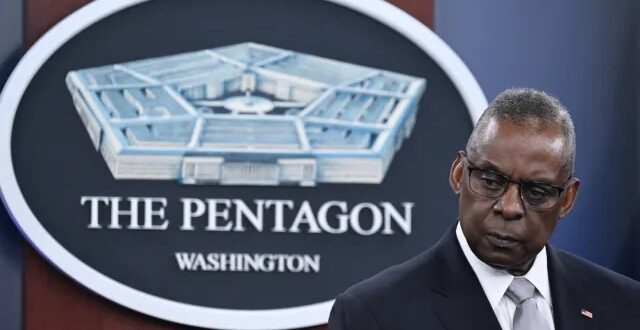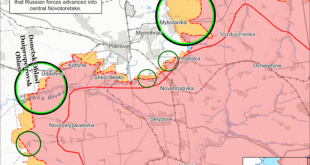US networks report plan for sustained campaign against Iranian oversea assets, citing White House officials
The US will seek a “Goldilocks” retaliation against Iran by striking its assets abroad in a campaign calibrated to restore deterrence while mitigating escalation risks, according to military sources and current and former officials.
Washington has approved plans for “multi-day strikes in Iraq and Syria against multiple targets, including Iranian personnel and facilities”, US network CBS news reported on Thursday, citing official sources.
US Secretary of Defense Lloyd Austin, at his first public appearance since a lengthy hospitalisation, said on Thursday the response would be “multi-tiered”. “We have the ability to respond a number of times,” he added.
The White House also briefed that the drone that killed three US soldiers at the Tower 22 base in Jordan on Saturday, claimed by a coalition of Iran-backed Iraqi militias, was manufactured in Iran.
President Joe Biden said earlier this week that a decision had been made how to respond to the attack. Adminstration officials have repeatedly stated that they are seeking to avoid a wider war, and the US has previously retaliated to Iran-allied militia attacks by targeting only the groups directly responsible.
But the President is under pressure to respond strongly to the first American combat deaths since the outbreak of the Israel-Hamas war, with House and Senate Republicans demanding a direct attack on Iran. Iranian officials have warned that an attack inside its borders would draw a “decisive” retaliation.
The Biden Administration now appears most likely to thread the needle between a high-risk strike in Iran and a limited attack on allied militias by targeting Iran through its many assets across the Middle East.
Dr Colin Clarke, a security analyst and director of research at The Soufan Group consultancy, said a “Goldilocks” option – one that is neither too hard nor too soft – was most realistic for the Biden Administration, which is facing fierce domestic pressure from the left over its support for Israel’s campaign in Gaza, and from the right for being perceived to have failed to deter Iran.
“What we are likely to see is targeting of Iran-backed militia infrastructure in Iraq and Syria, which could also end up with some Islamic Revolutionary Guard Corps (IRGC) personnel being killed,” he told i. “There could be an offensive cyber operation launched against Iran’s defence industrial base too.
“In order to avoid escalating too far, I think the Biden Administration will avoid targeting Iran directly, at least from a kinetic standpoint.”
Dr Clarke added that the response could take the form of a campaign rather than one-off attacks.
Former Rear Admiral Mark Montgomery, a military analyst at hawkish think-tank the Foundation for Defense of Democracies, said strikes inside Iran were unlikely but called for attacks across the region.
“The campaign we will see… should at a minimum include sustained strikes on every Iranian proxy target we can locate in Syria, Iraq, and Yemen, [and] include missiles and drone launch equipment, ammunition dumps, logistics sites and radars,” he wrote. “It must also include sustained strikes on hundreds of IRGC forces in Iraq, Syria and Yemen.”
A former British Foreign office official based in the Middle East said that attacks on Iranian bases abroad are likely but the US could also strike through assassinations, as Trump did with General Qassem Solemani in 2020.
“My suspicion is that a low level tit-for-tat era awaits… and the rules of the game change to targeted killings,” the ex-official said. “The US won’t want to drain resources with a direct war with Iran. The only option would be a covert campaign of messaging and killing.”
Iran has reportedly begun to withdraw assets from Syria that could have become targets, with Iranian sources citing Israeli attacks and assassinations. But Tehran has no intention of abandoning Syria, sources said, having built power in the war-torn nation in alliance with President Bashar al-Assad.
Khataib Hezbollah, a leading member of the Islamic Resistance in Iraq coalition that claimed the Tower 22 attack, said on Tuesday that it had suspended attacks on US bases.
Thursday’s developments followed another round of US air strikes against the Houthis in Yemen overnight. US Central Command said that 10 drones were struck as they were preparing to launch, without disclosing the locations.
The UK was not involved despite previously taking part in air strikes against the militant group.
The Houthis have carried out dozens of attacks on shipping since the outbreak of war in Gaza that have caused losses of billions of pounds in insurance costs. Houthi leaders say they are acting in solidarity with Palestinians and the attacks on shipping will continue.
The group claimed to have struck a US merchant ship in the Red Sea on Thursday, although maritime security agencies said that the claim had not been verified.
 Eurasia Press & News
Eurasia Press & News

